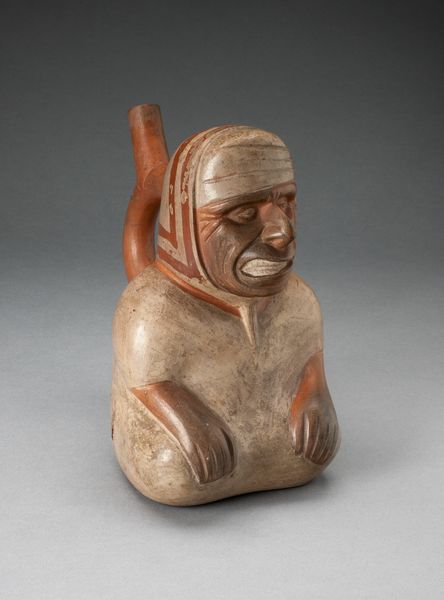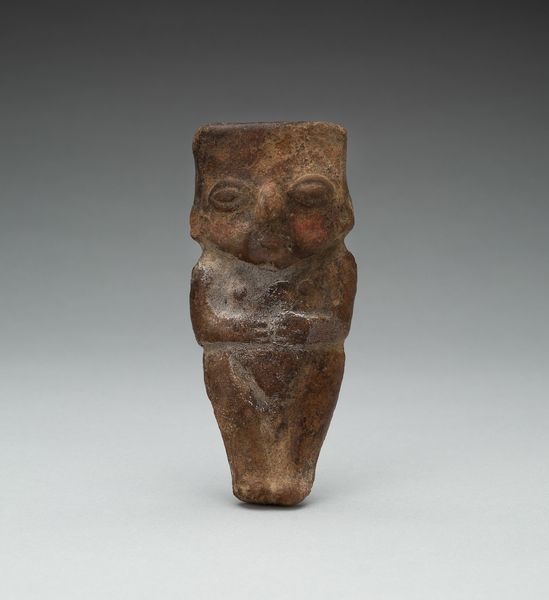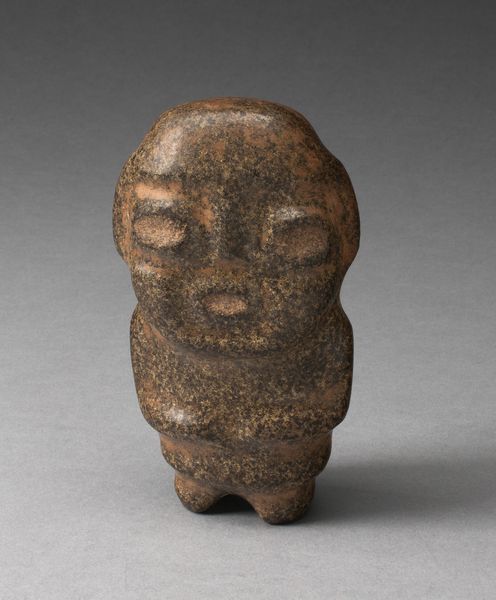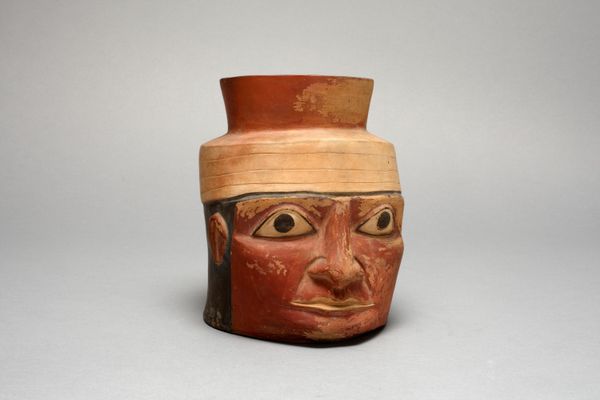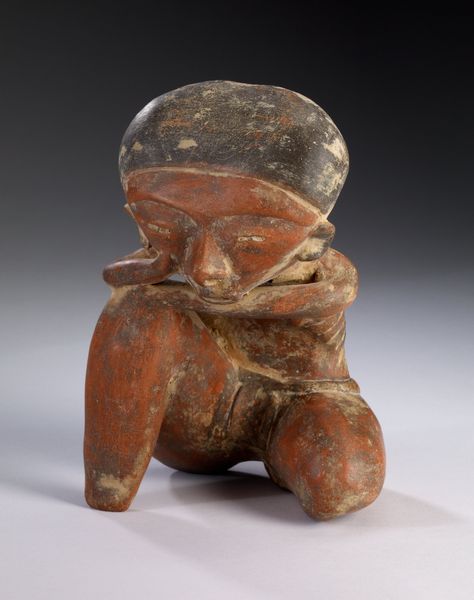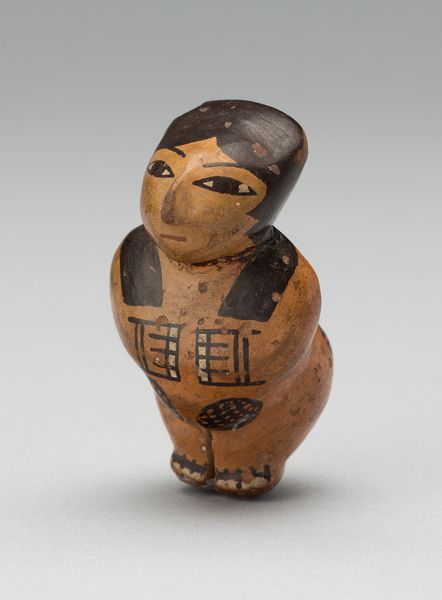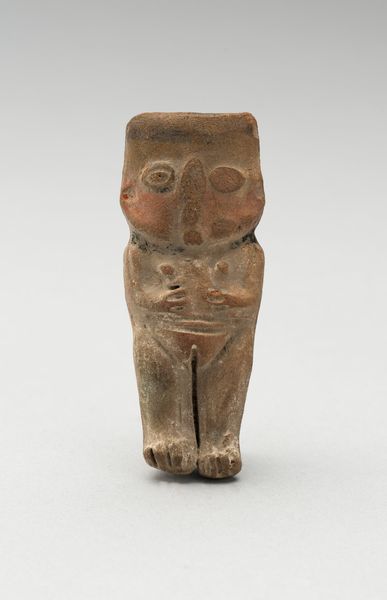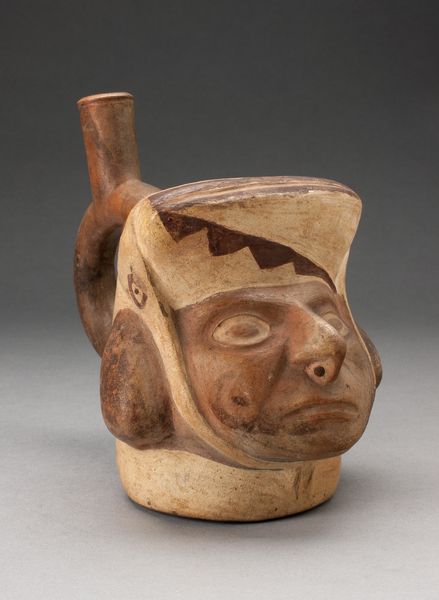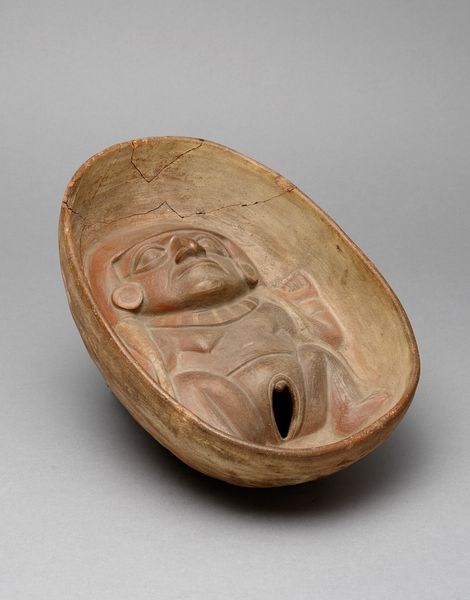
carving, sculpture
#
carving
#
figuration
#
form
#
sculpture
#
indigenous-americas
Dimensions: 4 1/2 x 2 1/4 x 3/4 in. (11.43 x 5.72 x 1.91 cm)
Copyright: Public Domain
This Olmec figure, carved from stone, resides at the Minneapolis Institute of Art. Its dark green, almost black, surface is smooth yet marked with sharp lines defining the figure’s form. The face, with its pronounced brow and downturned mouth, exudes a solemn intensity, mirrored by the rigid posture of the body. The figure is rendered with a striking balance of geometric abstraction and stylized naturalism. Notice how the Olmec artist reduced the human form to essential shapes, emphasizing symmetry and verticality. The incised lines, particularly around the limbs, create a dynamic interplay between surface and depth. This emphasis on structure invites us to consider how the artwork destabilizes established meanings of representation, engaging with new ways of perceiving the human form. The use of stone, combined with the figure’s abstract yet powerful presence, invites ongoing interpretation and re-interpretation.
Comments
minneapolisinstituteofart about 2 years ago
⋮
Each jade object made by the artists of the Olmec culture is a masterpiece of craftsmanship. Jade was hard to find, even harder to carve, and it was valued above all other materials by this ancient Mexican civilization. This figure depicts a were-jaguar, a supernatural being with both human and jaguar aspects. The were-jaguar was a powerful spirit who controlled rain and storms, as well as the growth of maize, the staple crop of the Olmec. This sculpture, used for ritual purposes, would have been carved for a member of the elite. The head is unusually large in proportion to the body, as it was believed to be the focus of spiritual force. The jaguar elements are most visible in the face, and include a short broad nose and a strongly down-turned mouth with heavy, feline lips.
Join the conversation
Join millions of artists and users on Artera today and experience the ultimate creative platform.
